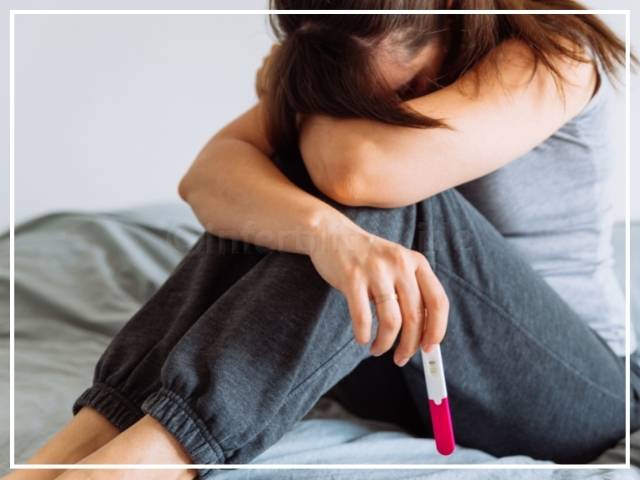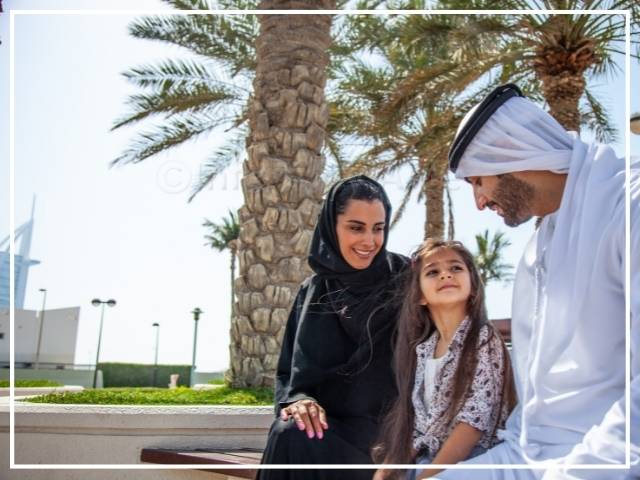Fertility rates in the UAE have dropped to some of the lowest in the world, as the residents focus more on their careers to keep up with the high cost of living, a study found. It is also attributed, in part, to increasing infertility among both men and women.
The latest world bank data indicates that fertility rates in the UAE (the total number of children per woman) have dropped to 1.5 in 2021, almost half of what they were in the 90s.
The decline in fertility has been going on since the 1960s, when a woman in the UAE would on average have 6+ kids (1).
A research paper explaining the decline of fertility in the UAE found that since the Government provides adequate social insurance, the usual benefits that people expect to derive from children is not a significant factor for people in the UAE.
The researchers claimed that the two primary causes of reduced fertility in UAE are: higher levels of education in women and late marriages that lead to late births (2).
Besides, infertility in the UAE has been growing at a staggering rate as well and because of cultural similarities, we sometimes have patients going to Malaysia for IVF.

Infertility in the UAE
According to market research conducted by Colliers, infertility rate in the Middle East is estimated to be at 15%, split across men and women (3). This is significantly higher than the 10% infertility rate over the rest of the world, as estimated by the World Health Organization (WHO).
Below are the reasons for growing infertility among UAE women:
1. Lack of sun exposure
The primary reason linked to the rise of female infertility in the UAE is the lack of sun exposure. Most females in Abu Dhabi, Al Ain, Dubai, and Sharjah commonly wear an abaya or burqa whenever they go out in public. The lack of exposure to sunlight significantly reduces the absorption of Vitamin D in the body, which could cause havoc in the hormones.
Vitamin D is essential in the production of anti-Mullerian hormone (AMH), which is needed in maintaining your egg quality.
If you have Vitamin D deficiency, your egg quantity and quality may deteriorate, which is what is happening to most women in the UAE. Additionally, a lack of Vitamin D in the body may lead to increased levels of cholesterol which could affect conception and fertility.
2. Obesity
Another cause for the rise of female infertility in the UAE is obesity (3). If you are obese, you are at risk for decreased uterus receptivity and diminished egg quality. Obesity is also often the reason for secondary infertility, which means that you could experience problems getting pregnant after a prior successful pregnancy.
3. Smoking, drinking
According to Maria Banti, a Dubai-based clinical embryologist, rising infertility in the UAE can be greatly attributed to lifestyle choices. Smoking, drinking, and not eating a balanced diet can affect health, specifically potency and fertility.
4. Late marriages
In addition to lifestyle and health factors, a study published in 2014 pointed out higher levels of female education and late births/late marriages as the two primary causes of fertility decline in the UAE (4).
“For women, egg quality can decline significantly as can sperm quality in men. Age also plays a critical role—because as a woman ages, their egg quality and quantity decline,” shared Ms. Banti.
Family balancing, gender selection, and IVF in the UAE
Aside from rising infertility in the UAE, the increasing number of genetic disorders among newborns is also the reason for the growing interest in IVF.
The awareness regarding the significance of early detection of genetic disorders such as Edward’s syndrome or Down syndrome is boosting the IVF industry in the UAE, just as the rest of the world.

IVF with genetic testing in the UAE
Apart from IVF treatments, the clinics in the UAE also offers various fertility treatments and services that are otherwise unavailable or prohibited in other countries such as family balancing or gender selection.
If you want to have a baby boy first, and then a baby girl the next, you can openly discuss this with a fertility doctor in the UAE for IVF. Through Comprehensive Chromosomal Screening (CCS) and IVF, it is possible to determine your embryo’s gender prior to pregnancy. Also known as pre-implantation genetic testing, it is a great option if you prefer to balance or sequence the genders of your future kids.
With PGT, doctors can also screen for potential genetic abnormalities.
Preimplantation genetic testing for gender selection is considered illegal in countries such as China, the UK, India, Canada, and Australia. However, it is allowed in Thailand, Italy, Mexico, and the US. These technologies are not yet available in many countries.
Genetic testing of embryos can also be done with Next Generation Sequencing (NGS). NGS also gives access to safe and efficient family balancing by producing almost 100% accurate results at the chromosomal level.
Cost of IVF in the UAE
IVF treatments need a lot of preparation – physically, emotionally, mentally, and financially. According to Colliers, the Emirates spends more than $200 million per year on fertility treatments.
UAE citizens are entitled to three free IVF cycles per year but non-citizens have to pay as their insurance rarely covers IVF. Dubai residents spend an estimated Dh20,000 to Dh30,000 per cycle of IVF.
Conclusion
This rising infertility in the UAE due to lifestyle, cultural, and societal factors is certainly a cause for concern.
Just including a more nutritious diet and getting some sun exposure every week, may help improve the egg quality in women and save you thousands in IVF costs.
If, however, you do need fertility treatments, working with a reliable and trusted fertility expert will help you get through it successfully.
With infertility on the rise as fertility rates in the UAE drop to some of the lowest in the world, if you need assistance with finding the right IVF doctor, get in touch using the red contact button here.
References
- The World Bank – Fertility rate, total(births per woman) – United Arab Emirates https://data.worldbank.org/indicator/SP.DYN.TFRT.IN?locations=AE
- Al Awad, Mouawiya & Chartouni, Carole. (2014). Explaining the decline in fertility among citizens of the GCC countries: The case of the UAE. Education Business and Society Contemporary Middle Eastern Issues. 7. 82-97. 10.1108/EBS-01-2014-0002
- UAE In-Vitro Fertilization Market: Female Infertility Rate of 90% Driving Demand https://www.researchandmarkets.com/reports/3146099/uae-in-vitro-fertilization-market-by-technique